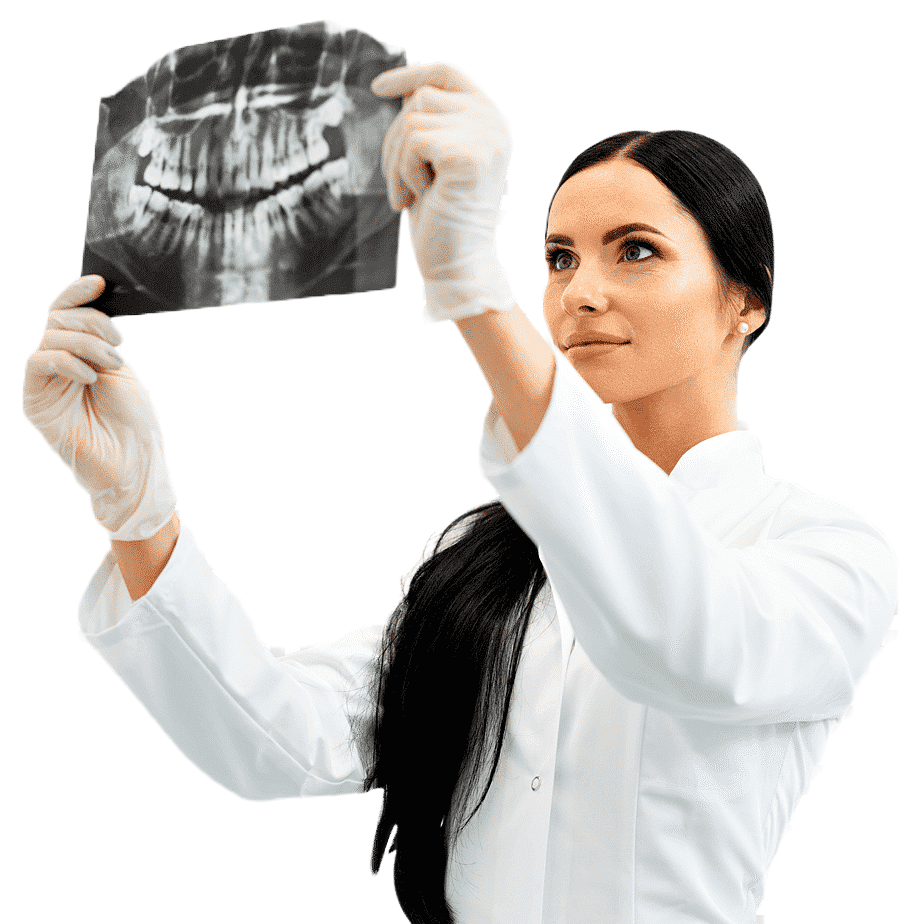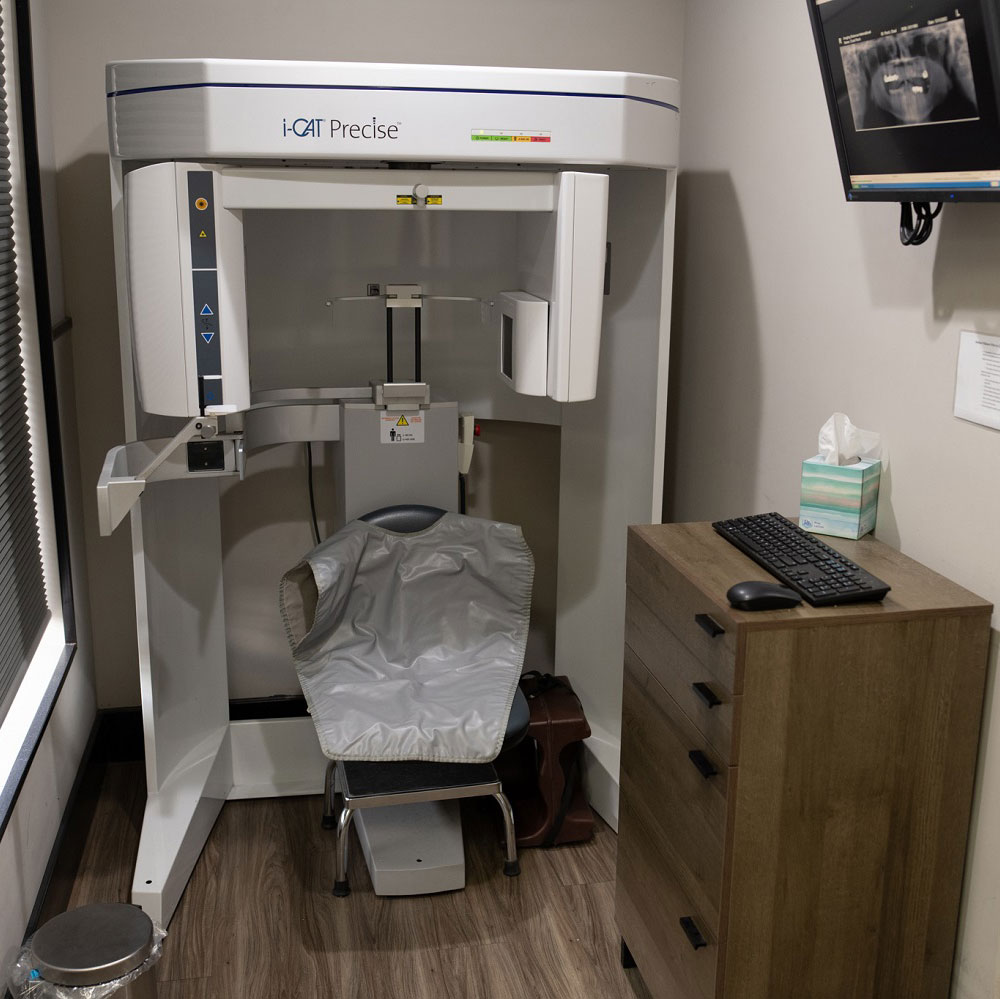General Dentistry

Pima Dental is committed to keeping your oral health in top shape. This means offering preventative general dentistry services for you and your family. Our patients love coming to us because they know they are getting the best dentistry and exceptional customer service at every level.

Dental Cleanings
The hygienists at Pima Dental are trained to keep your teeth clean and healthy so you may smile confidently for years to come. Teeth cleaning at Pima Dental includes removing plaque and tartar build-up. The procedure leaves your teeth smooth and clean, preventing bacteria from adhering to them. We use specialized, high-quality tools to remove the plaque without harming your teeth or gum.
During your routine dental cleaning, your hygienist will:
- Remove any calculus or tartar accumulated on your teeth using a combination of hand instruments and an ultrasonic cleaner.
- Take pictures of your teeth and mouth using the intra-oral camera.
- Remove the plaque from your teeth. Plaque is the sticky ‘film’ found on your teeth full of bacteria and possibly food debris. The toxins produced by the bacteria will cause inflammation of the gums and, if not removed, will lead to periodontal disease.
- Polish your teeth after calculus and plaque are removed to remove any stain you cannot remove with home care and routine brushing.
Examinations
Dental examinations are essential in general and preventative dentistry because they allow dentists to detect any concerns with your oral health early and initiate treatment measures. We’ll do a complete exam, asking you questions about your oral health habits and checking for any symptoms of oral health problems.
Routine dental exams are generally performed twice per year and will include the following:
- Review of diagnostic digital x-rays to detect decay (cavities), bone loss, and dental abnormalities within the bone. X-rays are also used to determine the position of teeth and roots that cannot be seen on examination.
- Oral cancer screening checks lips, tongue, gums, and tissues for abnormalities that may indicate oral cancer or other diseases.
- Periodontal (gum) screening is also used to check the gums and bones, measure the depth of pockets and check for bleeding to determine the presence of gum (periodontal) disease.
- Clinical tooth examination is done with dental instruments to check the surfaces of teeth for any tooth decay, as well as monitor the status of existing fillings, crowns, or other restorations in your mouth.


Digital
Dental X-Rays
X-rays are a crucial part of most dental check-ups. They allow the dentist to get a close-up and detailed view of the mouth that is not normally visible to the naked eye. Digital x-rays are commonly used to reduce radiation exposure. Knowing what is going on out of sight (the teeth, gums, and jawbone) allows the dentist to recommend the best treatment and prevent common oral diseases from worsening.
DIGITAL X-RAYS:
We care about your safety!
At Pima Dental, our clinic is equipped with the latest technology to diagnose various dental problems fast, accurately, and safely.
Digital X-rays are one of the advanced diagnostic technologies we use to offer you the best service possible. Digital radiography has revolutionized the way we take dental x-rays, making them quicker, more comfortable, and more convenient than ever before. Unlike traditional X-rays, which use film, digital x-rays use a digital sensor to capture images of your teeth. Digital X-rays emit far less radiation than traditional film x-rays and require no chemicals to develop the images. The high-quality images are then promptly shown on displays in the treatment room, allowing our dentists to give you efficient, accurate diagnoses and treatments.
What are the benefits of Digital X-Rays?
- Reduced chair time and wait time – results are instant and highly accurate.
- Improved imaging – images can be sharpened, enlarged, and optimized in a variety of ways that improve diagnostic proficiency
- Less radiation – the radiation exposure from digital imaging is 80% less than from traditional x-rays
- Decreased environmental impact – digital x-rays eliminate the material and chemical waste produced by traditional film-based x-rays
PANORAMIC X-Rays
Panoramic X-rays offer a clear image of your nasal and sinus areas and other oral and facial structures that the naked eye cannot see. Our team uses a mechanism that rotates around your head to identify suspected tooth decay, fractures, and bone loss instead of inserting film inside your mouth. Panoramic x-rays are used to detect impacted wisdom teeth, identify jaw disorders, monitor children’s tooth development, plan treatment for dental implants, and diagnose bone tumors and cysts.
The Panoramic X-Ray is:
- Important in diagnosing and treatment planning
- Used to help assess concerns before orthodontic treatment
- Safer than intra-oral x-rays as less radiation enters the body


Intraoral Cameras
Intraoral cameras are changing the game of dental appointments. The intraoral camera provides the patient a unique view of each tooth, allowing them to better comprehend diagnoses and make informed treatment decisions.
Our standard of care involves having a ‘tour of your mouth’ documented at your first visit by capturing individual photos throughout your mouth. The baseline is saved, and you and your provider may compare it to future visits to assess how things have improved or deteriorated.
The intraoral camera is used to demonstrate and show:
- Areas of infection and bleeding of the gums
- The accumulation of plaque and tartar
- Fillings and restorations that are breaking down
- Cracked teeth
- Lesions on the gum tissue or inside of the cheek
- Wear patterns on teeth from grinding or clenching
The intraoral camera has revolutionized general dentistry practice. Access to this technology makes it significantly easier for our dentists to diagnose dental problems accurately. It is also simpler for our specialists to discuss necessary treatment options for a patient’s oral health when they have a comprehensive image of their dental concerns.
Cone Beam Computed Tomography (CBCT) 3D Scan
The CBCT scan system used by dental professionals rotates around the patient, capturing data using a cone-shaped X-ray beam. This data is used to reconstruct a three-dimensional (3D) image of the head, face and jaw of the patient’s anatomy. CBCT scans are a critical part of modern implant treatment. This technology makes it possible for our team to take a complete 3D model of your soft tissues, bones, and teeth and provide better outcomes.


3D Intraoral Scanner
3D Intra oral scanning is a modern approach to traditional impression methods in dentistry. Instead of taking a physical impression, The scanner uses a small wand to capture 3d pictures of hard-to-reach places like back molars. Utilization of 3D digitization results in higher accuracy, better quality and shorter turnaround times of dental products such as crowns, bridges and partials.











